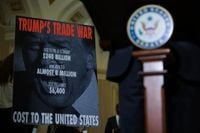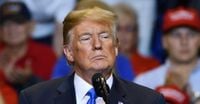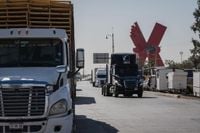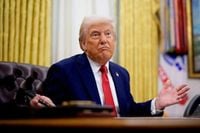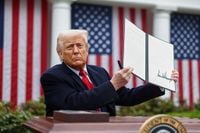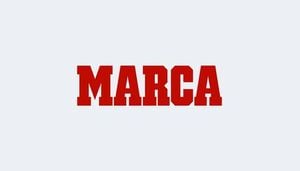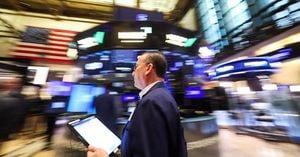The U.S. economy is facing a precarious situation as sweeping new tariffs announced by President Donald Trump threaten to push the nation into recession and exacerbate inflationary pressures. During a press event on April 2, 2025, dubbed "Liberation Day," Trump detailed plans for tariffs ranging from 10% to 50% on nearly all U.S. trading partners, marking what many economists are calling the most extensive tariff regime in over a century.
Jim Zelter, president of Apollo Global Management Inc., warned in a Bloomberg Television interview that the chances of a recession in the world's largest economy have surged to 50% or higher due to these tariff measures. He emphasized that the risk of tariffs accelerating inflation and limiting the Federal Reserve's ability to stimulate growth through interest rate cuts has also significantly increased.
Wall Street economists echoed Zelter's concerns, stating that the newly proposed tariffs could lead to a sharp and imminent recession. According to a report, Fitch Ratings estimates that the average U.S. tariff will rise to about 22%, the highest level since 1910. Some tariffs could reach as high as 54% on goods from China and 20% on imports from the European Union.
Bill Adams, chief economist at Comerica Bank, explained that this broad tariff regime would equate to a 25% tax increase on the $3.3 trillion worth of goods imported into the U.S. each year. He noted, "That's equivalent to a tax hike of 2% to 3% and more than doubling the effective federal corporate tax rate." This significant increase in tariffs is expected to place additional financial burdens on consumers and businesses alike.
JP Morgan analysts characterized the tariff plan as "the largest tax increase since the Revenue Act of 1968," predicting that it would cost Americans around $400 billion and add as much as 1.5% to current inflation levels as measured by the Personal Consumption Expenditure index, the Federal Reserve's preferred inflation benchmark. They cautioned that consumer spending, a key driver of the economy, could slip into contraction as soon as the second quarter of 2025.
The Atlanta Fed's GDPNow tracker has projected a staggering contraction of 3.7% for the first quarter of 2025, a stark contrast to the 2.4% growth rate recorded in the final quarter of the previous year. Adjusting for a substantial increase in gold imports, which distorted the calculations, suggests a contraction of 1.4%. Adams remarked, "The growth picture for the first quarter is very muddy," attributing some of the economic slowdown to temporary headwinds from natural disasters and government spending cuts.
As the implications of these tariffs unfold, the impact on American households could be severe. EY economist Gregory Daco estimated that the tariffs would lead to an annual income loss of $690 per household, with families in the bottom income quintile facing losses exceeding $1,000. Daco cautioned that a significant adverse reaction in financial markets could further deepen these economic shocks and potentially push the U.S. into recession.
Samuel Tombs, chief U.S. economist at Pantheon Macroeconomics, indicated that the overall impact of the tariffs would depend on how much of the price increases retailers pass on to consumers and the consumers' ability to switch to domestically produced goods or those from countries with lower tariffs. He noted, "We think these mitigating factors help to reduce the impact of any tariff increases on inflation by about one-third," suggesting a potential 1.25% uplift to the core PCE deflator from the president's latest tariff plans.
The administration's decision to implement the new tariff levels starting on April 9, 2025, leaves room for reconsideration and potential delays. Tombs pointed out that the speed with which tariffs can be removed could support the notion that a slowdown, rather than a full-blown recession, may be on the horizon.
However, regardless of how the growth narrative unfolds, the combination of slowing growth and rising inflation places the Federal Reserve in a challenging position. The central bank faces the dilemma of whether to lower interest rates to support the labor market, risking another inflation spike, or to raise rates to control price pressures, which could exacerbate the economic slowdown.
Richard Carter, head of fixed interest research at Quilter, remarked on the current market response, noting that Treasury yields have fallen sharply as investors flock to safe-haven assets. He stated, "This would suggest the Federal Reserve will need to put additional rate cuts on the table to look to prevent that recession from being triggered, but should it face inflation rising, too, it is in somewhat of a bind."
As the U.S. navigates these turbulent economic waters, the potential for stagflation—a combination of stagnant growth and high inflation—casts a shadow over the recovery efforts initiated after the pandemic. Economists and policymakers alike are now closely monitoring the unfolding situation as the implications of Trump's tariff strategy become clearer.
